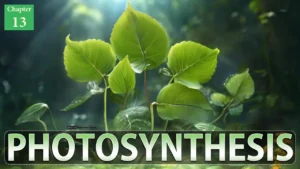Table of Contents
Frog Digestive System Short Notes
In this article we will discuss about the frog digestive system
Frog Digestive System
- The function of the frog digestive system is digestion and absorption
- Frog digestive system consists of alimentary canal along with digestive glands
Alimentary canal
- Alimentary canal is long, complete and coiled tube
- Alimentary canal consist of mouth, buccal cavity, pharynx, oesophagus, stomach, intestine, rectum, cloaca
Mouth
- Frog digestive system starts with the mouth
- Two bony jaws bound the mouth, and the jaws are covered by immovable lips
- Mouth helps in consumption of food. This process is known as ingestion.
Buccal cavity of frog
- Mouth opens into buccal cavity
- Buccal cavity has glandular epithelial lining that secrete mucus, helps in lubricating the food.
- Frog lacks salivary glands
Teeth
- Teeth occur in a row of maxillae bones in the upper jaw
- Function of teeth is to simply hold the prey and prevent it from slipping out
- The nature of teeth is homodont (similar), acrodont (not set in a socket), polyphyodont (replaced several times)
- The lower jaw lacks teeth
- Vomerine teeth are two rough bumps on the roof of the frog’s mouth. These function in holding and capturing prey.
Tongue
- Tongue is large, muscular and sticky
- Anterior end of tongue is attached to the inner border of lower jaw
- Posterior end is free and bifid
Pharynx
- The buccal cavity reaches short pharynx
- The pharynx tapers behind to lead to oesophagus through the gullet
- Gullet is the wide opening that leads to oesophagus
Oesophagus
- Oesophagus is short, wide and muscular tube
- Some alkaline digestive juice is secreted by the glandular lining of oesophagus
- The oesophagus opens into the stomach
Stomach
- Large and thick muscular sac like structure
- Anterior end of stomach is called cardiac end while the posterior end is called pyloric end
- The walls of stomach are muscular and glandular
- Stomach secrete HCL & proteolytic enzyme
- HCL makes the acidic PH of food & it is bacteriolytic
- In stomach, digestion of protein of food is started
Small intestine
- Small intestine is a long, coiled and narrow tube
- It comprises of two parts: anterior duodenum and posterior ileum
- The ducts from liver and pancreas open into the duodenum
- Bile juice emulsifies fat and pancreatic juices digest carbohydrates and proteins
- Digested food is absorbed by ileum
Rectum
- Large intestine is short and wide tube
- Its inner lining forms numerous folds
- In rectum undigested food material is stored which is ready to expel from cloaca
Cloaca
- The anus and the urinogenital apertures open into cloaca
- Cloaca opens to outside by the vent or cloacal aperture, lying at the hind end of body.
- Cloaca remove undigested food material.
Digestive glands of frog
Liver
- The largest gland of the body
- Bile is a greenish alkaline fluid secreted by liver
- Bile is stored sac called as gall bladder
- It changes the PH of food from acidic to alkaline
- Hepatic ducts joins the pancreatic duct to form a hepatopancreatic duct
- Ultimately opens into duodenum
Pancreas
- Pancreas is long and irregularly lobed gland
- It secrete pancreatic juice
- Pancreatic juice poured into duodenum through hepatopancreatic duct
- Pancreatic juice help digestion of ingested food
How Digestive System Works In Frog?
- Frog feeds on insects, worms, crustaceans, molluscs, small fish and even small frogs and tadpoles
- The prey is caught by rapid flicking of tongue and is swallowed as a whole
- Salivary glands are absent in case of frogs, the food is lubricated by the mucus secreted from the lining of buccal cavity and oesophagus
- The food is now passed to stomach
- Food remains in the stomach for up to 2-3hrs
- Gastric juice is secreted by the gastric glands of stomach wall
- Now acidic chyme enters the duodenum
- Three important substances mix with the food in intestine
- They are derived from three different sources: bile, pancreatic juice and intestinal juice
- Digestion is accomplished in the small intestine
- The faecal matter passes into cloaca
Frequently Asked Questions: –
What is the function of cloaca?
Cloaca found in cold blooded animals like frog, shark etc. Its common opening for digestive, urinary and resproductive duct. Opening of this cloaca is help for relase undigested food, urine, eggs and sperms.
Does frogs have salivary gland?
No, Frog lacks salivary glands. Buccal cavity and oesophagus releases lubricating substances insted of salaivary glands.
You may also like: –
- Frog Morphology Short Notes
- Frog Digestive System Short Notes
- Frog Respiratory System Short Notes
- Frog Circulatory System Short Notes
- Frog Nervous System Short Notes
- Frog Urogenital System Short Notes
For more detailed information about Structural Organisation in Animals, download now full study material as PDF and if you want to learn more detailed information about Structural Organisation in Animals, visit YouTube Channel.



![[PPT] The living world Class 11 Notes](https://rajusbiology.com/wp-content/uploads/2024/06/PPT-The-living-world-Class-11-Notes-300x169.webp)
